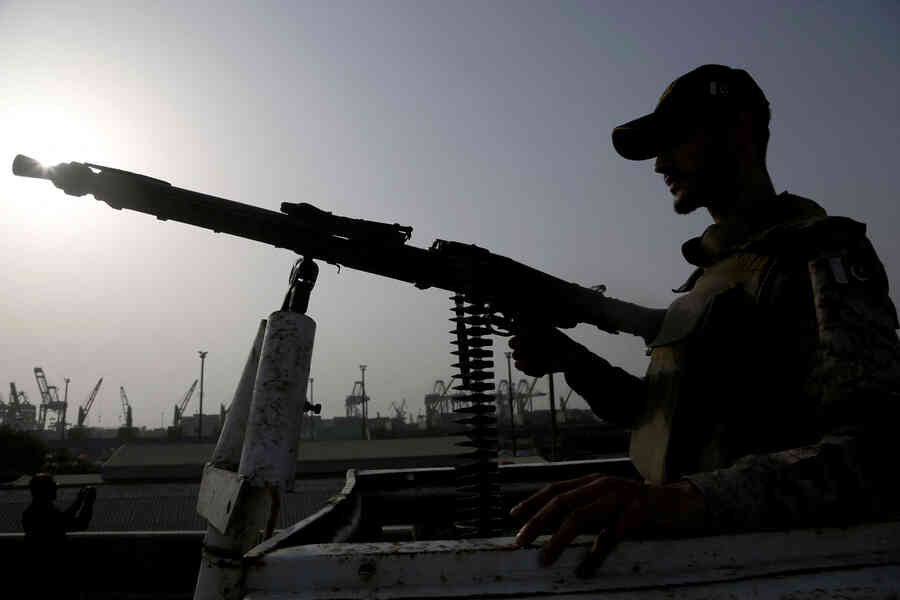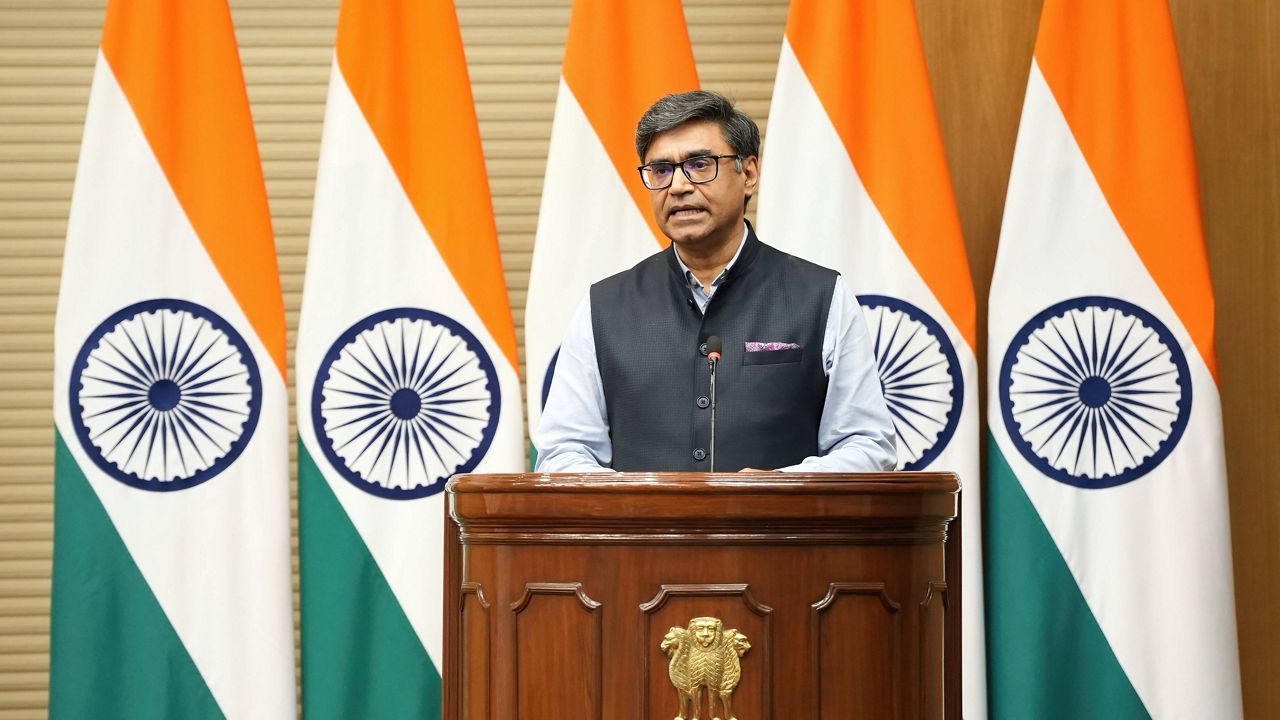Ceasefire Shattered: India-Pakistan Truce in Chaos
A fragile peace unravels as drones and shelling reignite tensions along the border.

On May 10, 2025, at 5:00 PM IST, India and Pakistan announced a “full and immediate ceasefire” to halt four days of intense cross-border strikes. The deal, brokered through US-mediated talks and confirmed by both nations’ foreign ministries, sparked hope for de-escalation after a deadly terror attack in Pahalgam on April 22 killed 26 civilians, mostly tourists. Yet, within hours, the truce lay in tatters. Pakistan violated the agreement with drone attacks and artillery shelling across Jammu and Kashmir, Punjab, and Rajasthan, plunging the region into chaos.
Explosions Rock Srinagar
By 8:00 PM on May 10, explosions echoed through Srinagar, the capital of Indian-administered Kashmir. Witnesses reported flashes in the night sky and sirens piercing the air. Jammu and Kashmir Chief Minister Omar Abdullah posted on X at 10:43 PM IST, “This is no ceasefire. The air defence units in the middle of Srinagar just opened up.” Indian air defense systems intercepted multiple Pakistani drones over Srinagar, Udhampur, and Kathua, while shelling hit Akhnoor, Rajouri, and RS Pura sectors along the International Border (IB).
Blackouts and Panic
As violations escalated, blackouts swept across Jammu and Kashmir, Punjab, and parts of Rajasthan. The Deputy Commissioner of Amritsar issued an urgent advisory at 9:30 PM, urging residents to stay indoors and prepare for prolonged power cuts. In Gujarat’s Kutch region, drones triggered air raid sirens, forcing local authorities to enforce blackouts by 10:00 PM. “We heard loud booms and saw lights in the sky,” a resident in Pathankot told Reuters. The Border Security Force (BSF) was ordered to respond with “full force,” neutralizing over 50 drones across six locations.
A Bloody Prelude
The ceasefire followed a brutal escalation. Since the Pahalgam attack, Pakistan’s repeated ceasefire violations—15 between January and April 2025—killed 13 civilians and injured 59 along the Line of Control (LoC). India’s Operation Sindoor, launched on May 7, targeted nine terrorist sites in Pakistan-controlled territory, prompting Pakistan to retaliate with missile and drone strikes on May 8 and 9. By May 10, five civilians in Jammu and one Indian Agniveer, M. Murali Naik, had died in the latest clashes.
Diplomatic Frenzy
The ceasefire was born from frantic diplomacy. At 3:35 PM on May 10, Pakistan’s Director General of Military Operations (DGMO) contacted India’s DGMO, proposing a truce across land, air, and sea. US President Donald Trump announced the deal on Truth Social at 8:00 AM EDT, claiming credit for mediation. Pakistan’s Foreign Minister Ishaq Dar confirmed the agreement on Geo News, noting involvement from “three dozen countries.” India’s Foreign Secretary Vikram Misri, however, stressed the deal was “worked out directly” between the two nations, downplaying US involvement.

Violations Spark Outrage
By 11:00 PM, reports of Pakistani drones over Punjab and Rajasthan fueled anger. Indian military officials held a press conference, rejecting Pakistan’s claims of hitting Indian airfields. “All nefarious designs will be responded with force,” the Indian Army stated on X. Congress MP Shashi Tharoor welcomed the ceasefire but called for vigilance, while opposition leaders demanded a special parliamentary session to address the crisis.
Kashmir Bears the Brunt
Kashmir, the epicenter of the conflict, reeled from the violations. Shelling damaged homes in Uri and Gurez sectors, with at least five civilian deaths reported in Jammu on May 10. Residents in border areas, battered by four days of fighting, expressed relief at the ceasefire news but fear at its collapse. “We thought the fighting was over,” a Srinagar shopkeeper told The Guardian. “Now the drones are back.” Pakistan’s Kashmir education minister reported ongoing skirmishes, signaling no immediate end to the violence.
Global Eyes on Nuclear Risks
The violations raised global alarm, given both nations’ nuclear arsenals. Earlier on May 10, Pakistan’s military hinted at a meeting of its nuclear oversight body, though the defense minister later denied it. The European Union’s top diplomat, Kaja Kallas, called the ceasefire a “vital step” but urged both sides to respect it. US Secretary of State Marco Rubio posted on X, announcing plans for talks at a “neutral site,” though India denied any such agreement.
What It Means Now
The immediate fallout is dire. Blackouts and air raid sirens have paralyzed border regions, with civilian safety at risk. India’s air defenses remain on high alert, and the BSF’s destruction of a terrorist launchpad in Sialkot’s Looni shows no letup in retaliation. Diplomatically, India’s suspension of the Indus Waters Treaty and visa cancellations remain in place, signaling no thaw in relations. The ceasefire’s collapse risks further escalation, with the LoC and IB as flashpoints. Pakistan’s denials of links to Lashkar-e-Taiba, blamed for the Pahalgam attack, complicate future talks. For now, both nations are locked in a tense standoff, with global powers watching closely.
A History of Broken Truces
India and Pakistan have a long history of fragile ceasefires. The February 2021 agreement, which held until early 2025, was repeatedly violated by Pakistan’s small-arms fire. The current crisis, sparked by the Pahalgam attack, marks the most severe confrontation in decades. Indian officials accuse Pakistan of using extremist groups as proxies, while Pakistan claims India’s strikes are disproportionate. With 18 days of escalating violence since April 22, trust is at an all-time low.
Voices from the Ground
Social media captured the chaos. Verified handle @BBCBreaking reported, “Explosions in Srinagar hours after India-Pakistan ceasefire deal.” On X, residents shared videos of flashing skies and distant booms, though none could be independently verified. “We’re hiding in our homes again,” one user posted anonymously. Indian Army sources told CNBC-TV18 that shelling and drone activity had “stopped” by 11:30 PM in some sectors, but officials remained cautious.
The Road Ahead
The ceasefire’s failure raises tough questions. Can India and Pakistan salvage the truce, or will violations spiral into broader conflict? India’s government insists it will not negotiate on terrorism, while Pakistan’s military movements near the LoC suggest readiness for more clashes. The planned DGMO talks on May 12 offer a slim chance for dialogue, but with drones still active and shelling reported as late as 11:00 PM, optimism is scarce.
A Region on Edge
For border communities, the night of May 10 was a stark reminder of their vulnerability. Schools in Jammu and Kashmir remain closed, and hospitals are on high alert. Pakistan’s reopened airspace offers little comfort as its military continues violations. The international community, from the US to the EU, calls for restraint, but the ground reality tells a different story—one of broken promises and relentless tension.
Stay sharp with Ongoing Now 24.





